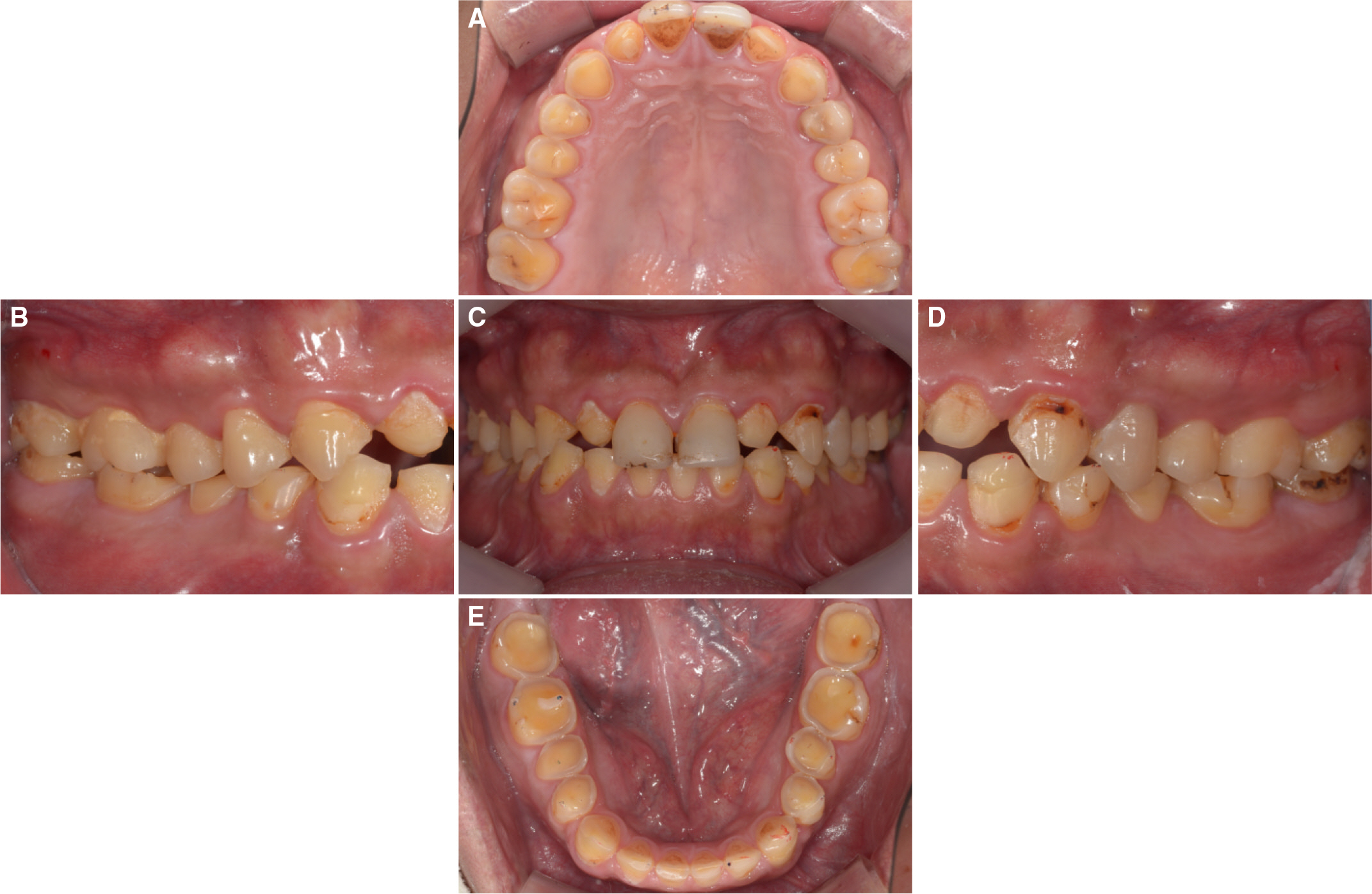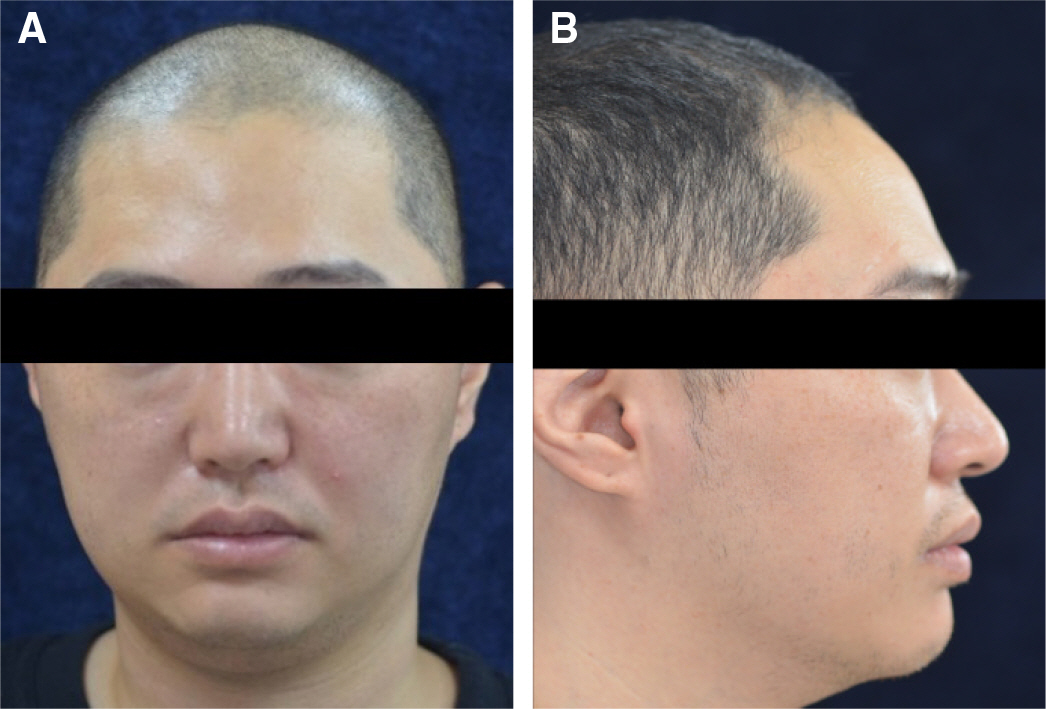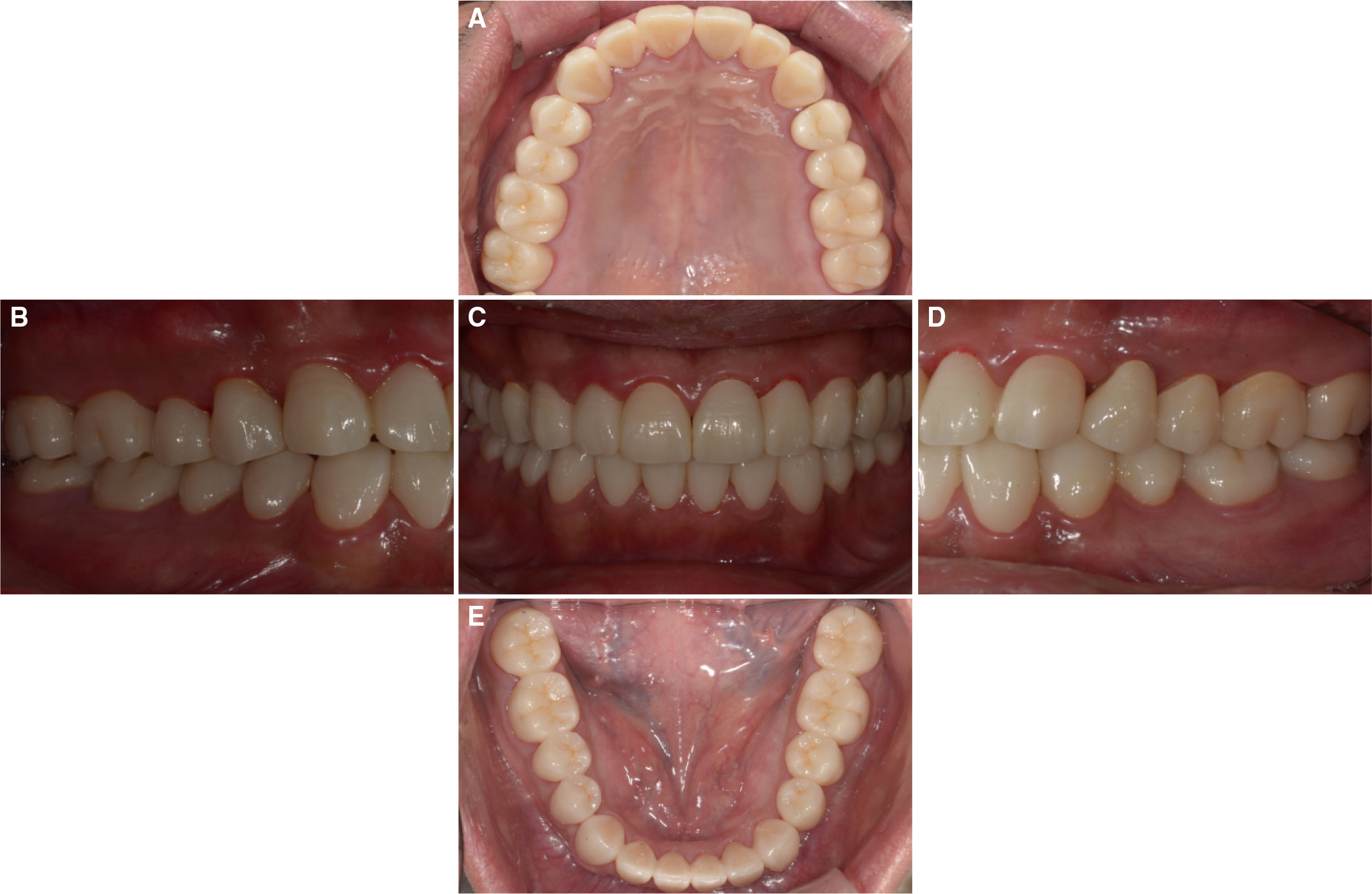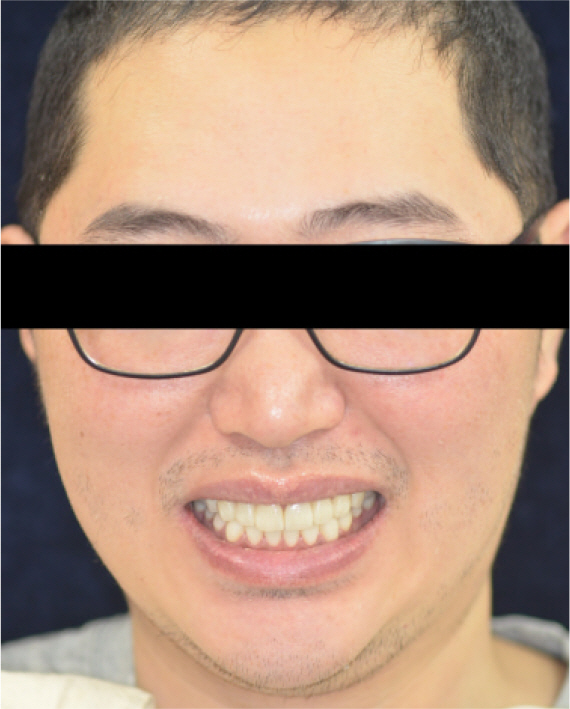J Korean Acad Prosthodont.
2016 Jul;54(3):273-279. 10.4047/jkap.2016.54.3.273.
Oral rehabilitation of a patient with severely worn dentition using monolithic zirconia
- Affiliations
-
- 1Division of Prosthodontics, Department of Dentistry, Anam Hospital, Korea University, Seoul, Republic of Korea. koprosth@unitel.co.kr
- KMID: 2344867
- DOI: http://doi.org/10.4047/jkap.2016.54.3.273
Abstract
- Severe tooth wear may lead to pathological changes of pulp, imbalance in occlusion as well as functional and esthetic problems. In this case, 34-year-old male came to the hospital because of generally worn dentition due to attrition and erosion. After evaluation, a full mouth restoration with elevation of the vertical dimension of occlusion was planned. After occlusion was stabilized by an occlusal stabilization appliance, centric relation position was recorded and subsequent provisional restorations were fabricated. After evaluation, a CAD-CAM (computer aided design-computer aided manufacturing) prosthetic restoration was carried out using monolithic zirconia. After 12 months of follow up observation, the patient was satisfied with function and esthetic appearance.
Keyword
MeSH Terms
Figure
Reference
-
1.Young WG. The oral medicine of tooth wear. Aust Dent J. 2001. 46:236–50.
Article2.ten Cate JM., Imfeld T. Dental erosion, summary. Eur J Oral Sci. 1996. 104:241–4.
Article3.Khan F., Young WG., Daley TJ. Dental erosion and bruxism. A tooth wear analysis from south east Queensland. Aust Dent J. 1998. 43:117–27.
Article4.Murphy T. Compensatory mechanisms in face height adjustment to functional tooth attrition. Aust Dent J. 2009. 4:312–23.5.Berry DC., Poole DF. Attrition: possible mechanisms of compensation. J Oral Rehabil. 1976. 3:201–6.
Article6.Faigenblum M. Removable prostheses. Br Dent J. 1999. 186:273–6.
Article7.Turner KA., Missirlian DM. Restoration of the extremely worn dentition. J Prosthet Dent. 1984. 52:467–74.
Article8.Ibbetson RJ., Setchell DJ. Treatment of the worn dentition: 2. Dent Update. 1989. 16:300–2. 305–7.9.Ganss C., Lussi A. Diagnosis of erosive tooth wear. Monogr Oral Sci. 2006. 20:32–43.
Article10.Khan F., Young WG., Law V., Priest J., Daley TJ. Cupped lesions of early onset dental erosion in young southeast Queensland adults. Aust Dent J. 2001. 46:100–7.
Article11.Young WG., Khan F. Sites of dental erosion are saliva-dependent. J Oral Rehabil. 2002. 29:35–43.
Article12.Brunton PA., McCord JF. An analysis of nasolabial angles and their relevance to tooth position in the edentulous patient. Eur J Prosthodont Restor Dent. 1993. 2:53–6.13.Dawson PE. Functional occlusion: From TMJ to smile design. Elsevier inc.;2007. p. 430–52.14.Abduo J., Lyons K. Clinical considerations for increasing occlusal vertical dimension: a review. Aust Dent J. 2012. 57:2–10.
Article15.Tinschert J., Natt G., Mautsch W., Augthun M., Spiekermann H. Fracture resistance of lithium disilicate-, alumina-, and zirconia-based three-unit fixed partial dentures: a laboratory study. Int J Prosthodont. 2001. 14:231–8.16.Christel P., Meunier A., Heller M., Torre JP., Peille CN. Mechanical properties and short-term in-vivo evaluation of yttrium-oxide-partially-stabilized zirconia. J Biomed Mater Res. 1989. 23:45–61.17.Miyazaki T., Nakamura T., Matsumura H., Ban S., Kobayashi T. Current status of zirconia restoration. J Prosthodont Res. 2013. 57:236–61.
Article18.Baldissara P., Llukacej A., Ciocca L., Valandro FL., Scotti R. Translucency of zirconia copings made with different CAD/CAM systems. J Prosthet Dent. 2010. 104:6–12.
Article19.Rojas-Vizcaya F. Full zirconia fixed detachable implant-retained restorations manufactured from monolithic zirconia: clinical report after two years in service. J Prosthodont. 2011. 20:570–6.
Article20.Limmer B., Sanders AE., Reside G., Cooper LF. Complications and patient-centered outcomes with an implant-supported monolithic zirconia fixed dental prosthesis: 1 year results. J Prosthodont. 2014. 23:267–75.
Article
- Full Text Links
- Actions
-
Cited
- CITED
-
- Close
- Share
- Similar articles
-
- Full mouth rehabilitation using zirconia crown in severe worn dentition: a case report
- Full mouth rehabilitation of the patient with worn dentition using full-contour monolithic zirconia prostheses at an increased vertical dimension of occlusion: a case report
- Full mouth rehabilitation of the patient with severely worn dentition and limited vertical dimension
- Full mouth rehabilitation of the patient with severely worn dentition using monolithic zirconia prosthesis: A clinical report
- Full mouth rehabilitation with vertical dimension increase in patient with severly worn dentition










